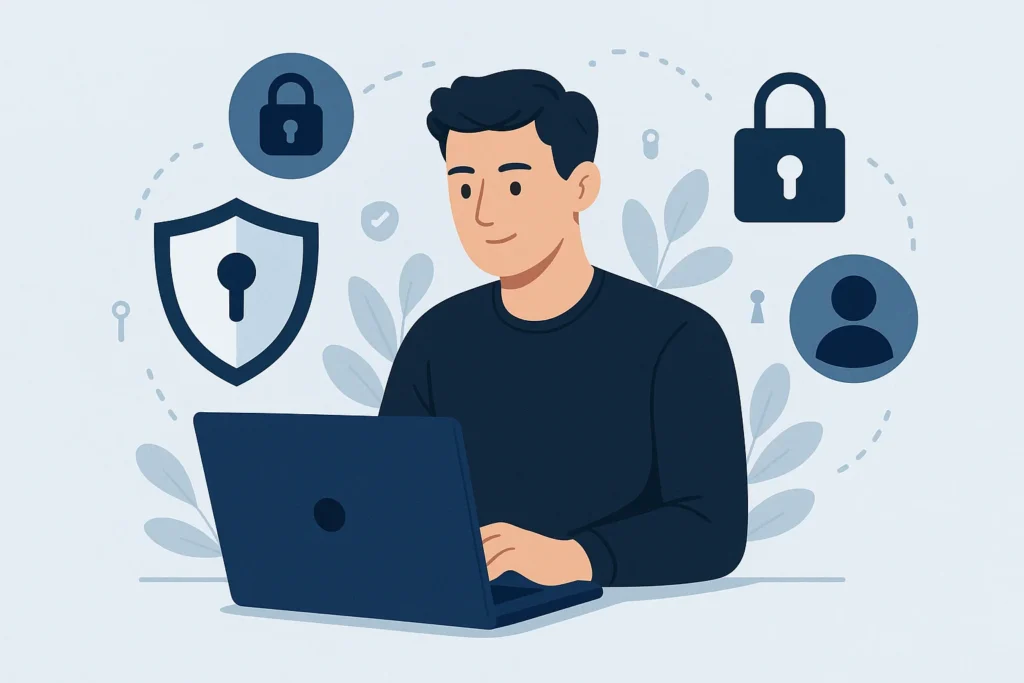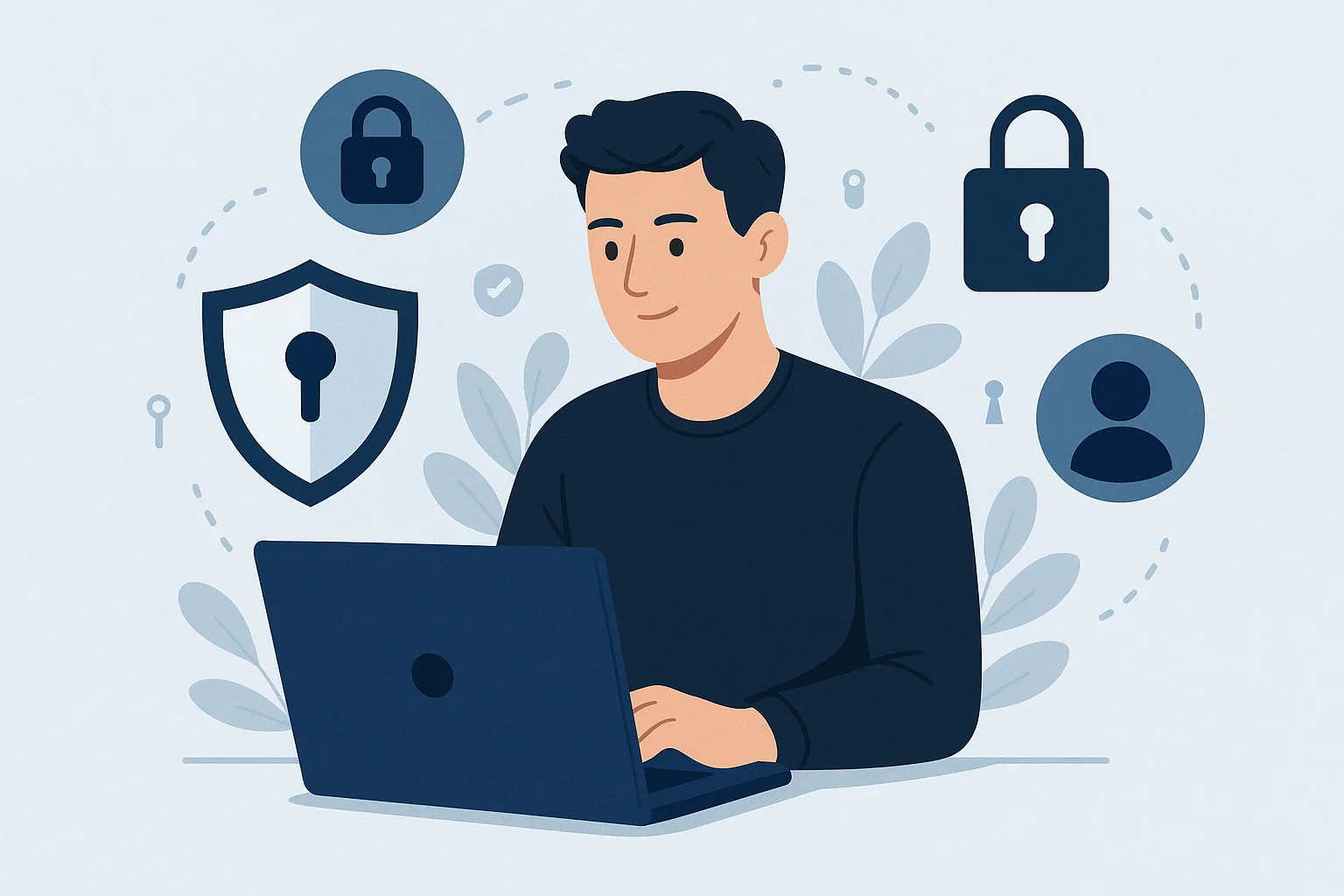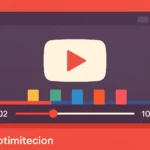Now Reading: How to Balance Screen Time and Real Life for Better Wellbeing
-
01
How to Balance Screen Time and Real Life for Better Wellbeing
How to Balance Screen Time and Real Life for Better Wellbeing

I glanced around the bus yesterday and noticed something striking – every single person was staring at their phone. Not one was looking out the window, talking to a seatmate, or simply being present in the moment. This scene perfectly captures our modern dilemma: how do we balance screen time and real life in a world where digital devices have become extensions of ourselves?
Today, I’m sharing the strategies that transformed my approach to digital life and helped me reclaim my time and attention.
Key Takeaways
- Set clear boundaries by establishing specific screen-free times and zones in your home
- Create a balanced routine that prioritizes real-life activities before screen time
- Take regular screen breaks using techniques like the Pomodoro method (25 minutes of work, 5-minute break)
- Engage in physical activities daily to counterbalance sedentary screen time
- Practice mindful technology use by being intentional about when and why you’re using devices
- Model healthy behavior for children by demonstrating balanced technology habits yourself
- Use screen time productively by choosing educational content and creative applications
Setting Boundaries For Healthy Technology Use
The foundation of balancing screen time and real life is establishing clear, consistent boundaries around when and how we use our devices. These boundaries help create structure and prevent technology from infiltrating every aspect of our lives.
Establish Screen-Free Zones
I’ve found that designating certain areas in my home as screen-free has dramatically improved my ability to disconnect. The dining table and bedroom are particularly important spaces to protect from screens. When I removed devices from these areas:
- Mealtime conversations became more engaging and meaningful
- My sleep quality improved significantly
- I rediscovered the joy of reading physical books before bed
- Morning routines became more mindful and less reactive
Creating these tech-free sanctuaries helps signal to your brain when it’s time to engage with the real world rather than the digital one.
Define Screen Time Hours
Just as important as where we use technology is when we use it. Setting specific hours for screen use creates healthy constraints that prevent digital creep. Consider:
- Implementing a “screens off” policy at least one hour before bedtime
- Waiting at least 30 minutes after waking before checking devices
- Designating certain days or evenings as “tech-free” times
- Using screen time as a reward after completing important tasks and responsibilities
When I started treating screen time as a scheduled activity rather than a default state, I found myself becoming more productive and present throughout the day.
Use Built-In Tools
Most devices now come with built-in screen time management tools that can help enforce the boundaries you set. I regularly use:
- Screen time reports to track my usage patterns
- App limits to restrict time spent on particularly addictive applications
- Downtime settings that block access to most apps during certain hours
- Focus modes that limit notifications during work or family time
These digital guardrails make it easier to maintain healthy boundaries even when willpower is low.
Useful Articles:
Creating A Balanced Daily Routine
Beyond setting boundaries, creating a structured routine that prioritizes real-life activities is essential for maintaining a healthy balance between screens and reality.
Prioritize Real-World Activities
One of the most effective strategies I’ve implemented is ensuring that important real-life activities come before screen time. This means:
- Completing essential tasks and responsibilities first
- Getting physical activity before settling in for leisure screen time
- Having face-to-face conversations with family members
- Engaging in hobbies and interests that don’t involve screens
By establishing this order of operations, screen time becomes a reward rather than a default, and I’m less likely to let it consume hours that should be dedicated to other activities.
Schedule Regular Screen Breaks
Even during necessary screen time for work or school, building in regular breaks is crucial for maintaining balance. The Pomodoro Technique has been particularly helpful for me – working for 25 minutes, then taking a 5-minute break to step away from the screen. During these breaks, I:
- Stretch or do quick exercises
- Look out the window to give my eyes a rest
- Grab a glass of water or healthy snack
- Take a few deep breaths to reset my attention
These brief intermissions prevent the mental fatigue that comes from extended screen sessions and help maintain a connection to the physical world.
Create Tech-Free Morning And Evening Routines
The way we start and end our days significantly impacts our relationship with technology. I’ve found that creating screen-free morning and evening routines helps bookend my day with real-world experiences:
Morning routine:
- Wake up with a traditional alarm clock instead of a phone
- Practice meditation, stretching, or journaling
- Enjoy breakfast without digital distractions
- Get outside for fresh air and natural light
Evening routine:
- Turn off screens at least one hour before bed
- Read a physical book or magazine
- Practice relaxation techniques like deep breathing
- Reflect on the day through conversation or journaling
These routines have helped me reclaim the most important parts of my day from digital distraction.
Enhancing Physical And Mental Wellbeing
One of the most compelling reasons to balance screen time and real life is the significant impact this balance has on both physical and mental health.
Prioritize Physical Activity
Extended screen time is inevitably sedentary, which can lead to a host of health problems. Counterbalancing screen use with regular physical activity is essential:
- Aim for at least 30 minutes of moderate exercise daily
- Take standing or walking breaks during long periods of screen use
- Consider a standing desk for work-related screen time
- Explore active hobbies that get you moving and away from screens
I’ve found that scheduling physical activities as non-negotiable appointments helps ensure they don’t get pushed aside for “just a few more minutes” of scrolling.
Protect Your Sleep
The blue light emitted by screens and the stimulating nature of digital content can significantly disrupt sleep patterns. To protect this crucial aspect of health:
- Use night mode or blue light filters in the evening
- Keep all screens out of the bedroom
- Establish a consistent sleep schedule
- Replace bedtime scrolling with relaxing screen-free activities
Since implementing these changes, I’ve experienced deeper, more restorative sleep and wake up feeling genuinely refreshed rather than immediately reaching for my phone.
Practice Mindfulness
Mindfulness – the practice of being fully present and aware – serves as a powerful antidote to the distracted state that often accompanies heavy screen use. I incorporate mindfulness into my day by:
- Taking moments to notice my surroundings using all five senses
- Practicing focused attention during conversations
- Eating meals slowly and without distractions
- Engaging in meditation or breathing exercises
These practices strengthen my ability to be present in the real world and make me more aware of when I’m being pulled into mindless screen time.
Useful Articles:
Nurturing Real-Life Connections
Perhaps the most important aspect of balancing screen time and real life is preserving and strengthening our in-person relationships, which provide fulfillment in ways that digital connections simply cannot.
Prioritize Face-to-Face Interaction
In a world where it’s easy to substitute texts and social media for real conversation, making a conscious effort to prioritize face-to-face interaction is essential:
- Schedule regular unplugged time with family and friends
- Create rituals like family game nights or weekend outings
- Make eye contact and practice active listening during conversations
- Choose in-person meetings over video calls when possible
I’ve noticed that the quality of my relationships has deepened significantly when I’m fully present rather than partially engaged while checking my phone.
Establish Phone-Free Social Time
When spending time with others, creating agreements about phone use can prevent the all-too-common scene of people physically together but mentally elsewhere:
- Suggest a “phones in a basket” policy during gatherings
- Play the “first to check their phone pays the bill” game at restaurants
- Set a good example by keeping your own phone put away
- Gently redirect conversation when someone is distracted by their device
These practices may feel awkward at first but quickly lead to more meaningful and enjoyable social experiences.
Rediscover Shared Activities
Finding activities to enjoy together that don’t involve screens can reinvigorate relationships and create lasting memories:
- Explore outdoor adventures like hiking, biking, or kayaking
- Try new hobbies like cooking, painting, or gardening
- Play board games or card games
- Volunteer together for a cause you care about
These shared experiences create bonds that are often stronger than those formed through digital interaction.
Teaching Children Healthy Screen Habits
As parents and caregivers, one of our most important responsibilities is modeling and teaching healthy approaches to technology.
Set Age-Appropriate Limits
Different developmental stages require different approaches to screen time:
- For young children (under 5), minimize screen time and focus on interactive rather than passive content
- For school-age children, establish clear rules about when and where screens can be used
- For teenagers, focus on teaching self-regulation and critical thinking about media consumption
Adjusting expectations as children grow helps them develop a healthy relationship with technology throughout their lives.
Model Healthy Behavior
Children learn more from what we do than what we say. Demonstrating healthy screen habits ourselves is the most powerful teaching tool:
- Put your phone away during family meals and activities
- Talk openly about your own struggles with balancing screen time
- Show enthusiasm for real-world activities and experiences
- Admit when you’ve spent too much time on screens and correct course
When I became more conscious of my own screen habits, I noticed my children naturally began to mirror this more balanced approach.
Make Screen Time Interactive And Educational
Not all screen time is created equal. When children do use screens, guiding them toward quality content and interactive experiences maximizes benefits:
- Choose educational apps and programs that encourage creativity and problem-solving
- Watch shows and movies together and discuss the content
- Use video calls to connect with distant family members
- Explore digital tools that complement real-world interests and hobbies
This approach helps children see technology as a tool for learning and connection rather than just entertainment.
Useful Articles:
Making Screen Time More Productive
While reducing mindless screen time is important, making our necessary screen time more intentional and productive is equally valuable.
Choose Quality Over Quantity
Being selective about digital content can transform screen time from a passive time-sink to a valuable experience:
- Curate social media feeds to include inspiring and educational content
- Subscribe to newsletters and blogs that provide genuine value
- Select documentaries and informative videos over mindless entertainment
- Use apps that teach new skills or languages
I regularly audit my digital consumption and eliminate sources that don’t contribute positively to my life or goals.
Combine Digital And Physical Activities
Finding ways to integrate technology with physical activities creates a healthier balance:
- Use fitness apps to track and motivate exercise
- Try geocaching or augmented reality games that require movement
- Use cooking apps while preparing meals
- Listen to podcasts or audiobooks during walks or workouts
These combinations allow us to benefit from technology while remaining engaged with the physical world.
Implement Digital Minimalism
Inspired by Cal Newport’s concept of digital minimalism, I’ve found value in periodically evaluating which digital tools truly enhance my life:
- Regularly delete unused apps from your devices
- Unsubscribe from email lists that don’t provide value
- Consolidate similar digital tools to reduce switching between platforms
- Question whether new technology truly improves your life before adopting it
This thoughtful approach prevents digital clutter from overwhelming our attention and time.
Overcoming Digital Addiction
For many of us, the pull of screens goes beyond habit into the territory of addiction. Recognizing and addressing these deeper patterns is sometimes necessary.
Recognize Warning Signs
Being honest about problematic usage patterns is the first step toward change:
- Feeling anxious when separated from your device
- Losing track of time while using screens
- Neglecting responsibilities or relationships due to screen use
- Experiencing physical symptoms like headaches or eye strain
- Using screens to avoid difficult emotions or situations
I’ve experienced many of these signs at different points and found that acknowledging them was crucial to making changes.
Create Friction For Unhealthy Use
Making unhealthy screen habits more difficult can help break addictive cycles:
- Remove social media apps from your phone (access via browser instead)
- Use grayscale mode to make your phone less visually appealing
- Store devices out of sight when not in use
- Disable notifications for non-essential applications
- Use apps like Freedom or Cold Turkey to block distracting websites
These small barriers can be surprisingly effective at reducing unconscious usage.
Practice Digital Detoxes
Periodic breaks from technology can reset habits and provide perspective:
- Try a weekend without social media
- Take a full day each week without screens
- Go on vacation to places with limited connectivity
- Participate in challenges like “Screen-Free Week”
After my first digital detox weekend, I was amazed at how much calmer I felt and how much time I seemed to have for activities I’d been “too busy” for.
Measuring Progress And Adjusting Strategies
Creating sustainable change requires ongoing assessment and refinement of our approach to balancing screen time and real life.
Track Your Screen Time
Most smartphones now provide detailed reports on usage. Reviewing these regularly can provide valuable insights:
- Note which apps consume most of your time
- Identify peak usage times throughout the day
- Compare weekday versus weekend patterns
- Look for trends over time to see if changes are working
This data has helped me identify blind spots in my own habits that I wasn’t consciously aware of.
Reflect On Quality Of Life Indicators
Beyond just tracking hours, assess how your relationship with technology is affecting your overall wellbeing:
- Sleep quality and energy levels
- Satisfaction with relationships
- Productivity and focus
- Stress and anxiety levels
- Physical comfort and health
I keep a simple journal noting these factors, which helps me connect changes in my screen habits with real improvements in my quality of life.
Adjust Strategies As Needed
What works in one season of life may not work in another. Being flexible and willing to adjust your approach is key:
- During busy work periods, you might need stricter boundaries
- While traveling, different rules might apply
- As children grow, family technology policies will need to evolve
- New technologies may require new strategies
Balancing screen time and real life isn’t about perfection-it’s about progress and intentionality. By setting clear boundaries, creating structured routines, prioritizing physical and mental wellbeing, nurturing real-life connections, and making our screen time more productive, we can develop a healthier relationship with technology. The digital world offers incredible benefits when we control it rather than letting it control us. With mindful effort and consistent practice, we can enjoy the best of both worlds-staying connected digitally while remaining fully present in the rich, irreplaceable experiences of real life.
Useful Articles:




















